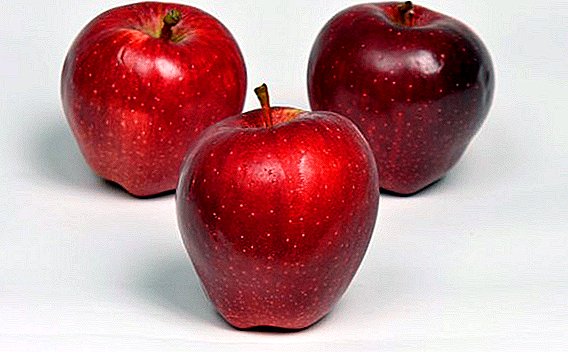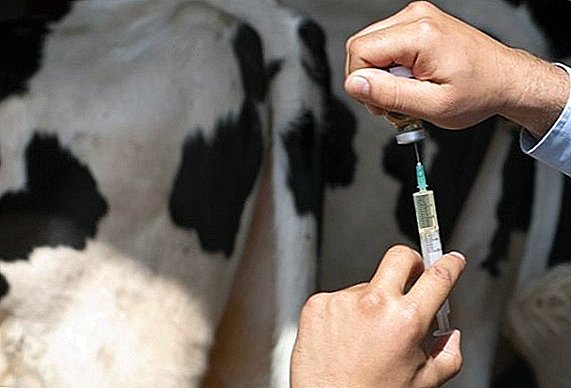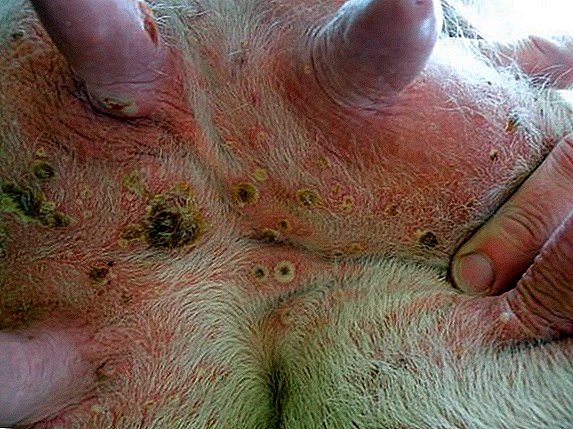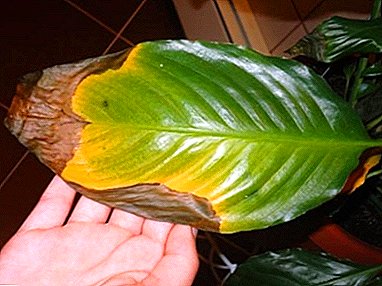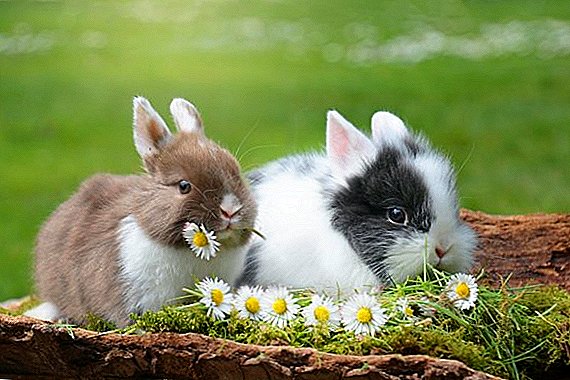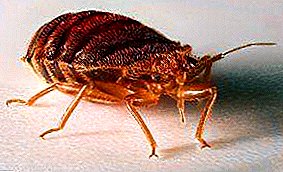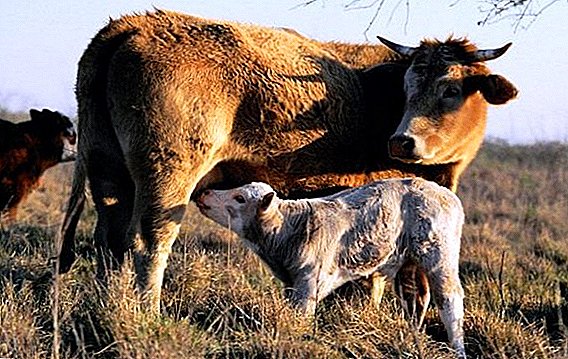 If you have just started farming or are seeking to improve the knowledge of caring for cattle, it will be useful for you to learn all the details of this business.
If you have just started farming or are seeking to improve the knowledge of caring for cattle, it will be useful for you to learn all the details of this business.
In particular, we consider one of the important periods in the life of a cow, which occurs immediately after calving.
Care for a cow and calf after calving
Only a born calf should not stay long in the sun or supercool. After birth, it is placed in a dispensary. If the weather is sufficiently humid and cold, veterinarians should dry the animal with an infrared lamp.  It is better that there is no draft in the dispensary room and a stable temperature of +21 ° C. It is necessary to protect animals from getting into the respiratory tract of microorganisms. Be sure to clean the cage and disinfect it, lay a clean straw bedding.
It is better that there is no draft in the dispensary room and a stable temperature of +21 ° C. It is necessary to protect animals from getting into the respiratory tract of microorganisms. Be sure to clean the cage and disinfect it, lay a clean straw bedding.
Access to calves is allowed to a limited number of healthy people who do not have infectious diseases at the time of contact with the animal.
Calves must consume milk (whole or a substitute). Do not feed the pet. A light diet will help him adapt his digestion, avoid diarrhea. If you do not overfeed with milk, it will be easier for the newborn to learn to eat solid foods in the future.
After giving birth, the cow needs to wash the genitals and wipe all dirty parts of the body with hay or straw. Udder is better to rinse with potassium permanganate or any weak disinfectant that you have in stock.
Important! When the first contaminated colostrum appears in an animal, it must be baked and not given to the calf, because it will not bring any benefit.
When an animal is in a maternity hospital, it needs to wash the genitals with potassium permanganate until lochia stops excreting. After delivery, you can also wipe the udder with water (1 bucket) at room temperature with 200 g of soda and wipe it with a clean, dry towel or just a cloth. 
How to feed a cow after calving
During the first week after giving birth, feed a cow with bran oatmeal. This will help to restore the genitals and normalize the process of digestion. After the first seven days, you can begin to give food familiar to animals.
It is important that cows consume minerals. Mineral salt is used to make the heart work better, there was a strong skeleton, a nervous system. Useful feed with corn, potatoes and straw.
It will be useful for you to find out what should be the discharge from the cow before and after calving, what the white discharge means, why the cow does not stand up after calving, and also find out how after the calving there is such a disease as mastitis.
They have a lot of calcium and phosphorus, which help to establish mineral metabolism. If a cow consumes feed in which there are few minerals, it is fed with precipitate, phosphate rock, calcium phosphate.
Each individual needs to select its own dosage of mineral substances. It should correspond to the weight of the animal, state of health, the number of daily milk yield. Minerals are advised to be given along with a properly selected concentrate, hay tea or kale.
To improve lactation and metabolism, you need to give salt.
Feed your pet feeds containing cobalt, iodine, iron, copper, zinc, manganese. Diversify your food with meadow and bean hay, clover hay, alfalfa, and oatmeal. In addition, all feed should be as juicy as possible. In this case, more milk will be released.  Beetroot, carrot, potatoes will be suitable food, because they are milk-based products.
Beetroot, carrot, potatoes will be suitable food, because they are milk-based products.
Cattle are best fed regularly daily at the same time. So milk yield will increase. If the amount of milk is reduced, this may indicate addiction to some product. Expand your diet, replace the usual food with a new one.
Did you know? The weight of the heaviest cow in the world was 2270 kg, and height - 1 m 88 cm. But her life lasted only 4 years.
Proper milking after calving
In order not to harm the mother, but still get milk, you should familiarize yourself with some rules for proper milking.
How to crush a cow
Section is a set of procedures for increasing milk production. The udder becomes not as elastic and soft as it was before the birth, so smear it with ointments to soften the skin and massage it. If the cow gave birth for the first time, the udder may swell too much.
Important! If you milk the cow before the expected day of birth, the calf may be born ahead of time.
You can help, reducing drinking, refusing juicy food, having a massage. 
How many times do I milk a cow
After giving birth, milk begins to be actively produced, so milk the cow four or five times a day. After a couple of weeks, you can go to the three-time milking. If the animal gives less than 10 liters of milk, start feeding him twice a day.
When can I drink milk
Immediately after birth, you can not eat dairy product. It is better to decant the first drops from the udder and not to drink to anyone. For the first time after calving, milking should take place in an hour and a half. You can drink milk only after the colostrum stops flowing.
Accordingly, you can consume regular milk in a week after the birth of a calf.
Important! Do not allow strong sagging of the mammary glands. Buy and wear a bandage to support the udder.
What problems can be after childbirth
Unfortunately, after giving birth a cow may have some complications. It is important to know about them and not to miss their first signs.
- Immediately after the birth of a calf, udder edema may occur. This is due to improper circulation and changes in lymphatic drainage. This is normal. But it is worth being attentive to the animal, to find out whether there is mastitis. For therapeutic purposes, make a massage in the udder area daily. Movement should be directed towards the base of the breast. This procedure will help restore blood circulation. You can also use diuretics or laxatives.
- The violation is the delay of the afterbirth. In the normal state, the afterbirth departs within six hours. If after ten o'clock nothing has changed, act urgently. Use medications that the vet will advise you, they will bring the uterus to a tone. Walk the animal a couple of times for 30 minutes. Add honey to the food (half a liter).
- Another disease can be paresis., that is, a violation of the neurological state of an animal in which voluntary movements are disturbed. The disease can be caused by a virus. It can be in the brain or spinal cord and damage the motor centers. Before the arrival of the doctor, pound the wool with hay and wrap the pet. Also use caffeine, glucose, calcium chloride, diluted sugar in water.
- Sometimes a sticking occurs. This happens if you incorrectly kept a cow before giving birth. Consult a doctor. The treatment lasts about a week. If you do not pay due attention, there is a likelihood of pressure sores, vaginal prolapse, exhaustion, sepsis, pneumonia, atony.
Find out what to do if the cow does not leave the last or she ate it.

When can I inseminate a cow after calving
There is still no exact and unanimous opinion on the start of insemination. Still, most veterinarians advise seeding cows three months after the birth of a calf. Scientists explain just such a period by lowering the level of milk production and lactation, which does not exceed 305 days.
Did you know? The weight of the lightest calf in the world, which was born in the UK, is 15 kg with a minimum rate of 30 kg.
Obviously, the birth of a calf is not only the beginning of a new life, but also a slight change in the care, treatment and nutrition of the “woman”, therefore it is important to take care of the “young mother” in a timely manner and be attentive to all changes in the behavior and appearance of the animal. And then you are provided with high milk yields and healthy livestock.


